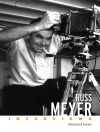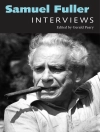George Lucas is an innovative and talented director, producer, and screenwriter whose prolific career spans decades. While he is best known as the creative mind behind the Star Wars franchise, Lucas first gained renown with his 1973 film American Graffiti, which received five Academy Award nominations, including Best Director and Best Picture.
When Star Wars (1977) was released, the groundbreaking motion picture won six Academy Awards, became the highest grossing film at the time, and started a cultural revolution that continues to inspire generations of fans. Three decades and countless successes later, Lucas announced semiretirement in 2012 and sold his highly successful production company, Lucasfilm, to Disney. His achievements have earned him the Academy’s Irving G. Thalberg Award, the American Film Institute’s Life Achievement Award, induction into the Science Fiction Hall of Fame and the California Hall of Fame, and a National Medal of Arts presented by President Barack Obama.
Lucas: His Hollywood Legacy is the first collection to bring a sustained scholarly perspective to the iconic filmmaker and his legacy beyond the Star Wars films. Edited by Richard Ravalli, this volume analyzes Lucas’s overall contribution and importance to the film industry, diving deep into his use and development of modern special effects technologies, the history of his Skywalker Ranch production facilities, and more. With clearly written and enlightening critiques by experts consulting rare collections and archival materials, this book is an original and robust project that sets the standard for historical and cultural studies of Lucas.
สารบัญ
Introduction, by Richard Ravalli
1. Reflections on George Lucas and Modesto, by Dale Pollock
2. Marcia Lucas: Her Life and Hollywood Legacy, by Michael Kaminski
3. ‘Are You Now, Or Have You Ever Been?’: The Alientation of the Administered Society, Running to Freedom, and the Dystopianism of George Lucas’s THX 1138, by John C. Mc Dowell
4. American Graffiti and More: The Scholarly and Aesthetic Legacies of an Inaugural Nostalgia Film, by Christine Sprengler
5. ‘A New Hope’: From American Graffiti to Star Wars, by Peter Krämer
6. Writing About Star Wars: A Historiography of the Star Wars Original Trilogy, by Andrew Howe
7. ‘Archaeology is the search for fact…not truth’: How Indiana Jones Redefined Our Relationship with the Past, by Janice Liedl
8. From Sass to Seduction: The Ambiguously Tough Ladies of Star Wars and Indiana Jones, by Valerie Estelle Frankel
9. Researching the Lucasfilm Yearbooks: ‘FAMILY—ONE WIFE, ONE DISCO-BOOGIE BABY, AND 425 FOSTER KIDS’, by Julie Turnock
10. Notes on the Lucas-Spielberg Syndrome, by Jim Kendrick
11. The Dislocations of Skywalker Ranch, by Kenneth Hough
12. Lucas Meets Luxo: Lucasfilm’s Computer Graphics Lab (CGL) and the Development of Pixar Animation Studios, by Christopher Holliday and Chris Pallant
13. The Audience Is Listening: The Film Sound Legacy of George Lucas, by Stephen Andriano-Moore
14. Lucas Arts and the Hollywoodization of Video Games, by Stefan Hall
15. Franchise and Edutainment in the History of Lucasfilm Television, by Joseph Darowski
16. George and the Dinosaurs: George Lucas’s Contributions to The Land Before Time and Jurassic Park, by Kathy Merlock Jackson
17. Star Wars Special Editions: Film Ownership and Cultural Implications, by Patti Mc Carthy
18. Changing Critical and Popular Responses to the Star Wars Prequels, by Shanti Fader-Whitesides
19. From Rebels to Emperors to Jedi Spirits: Walt Disney, George Lucas, and Their Fans, by Craig Svonkin
20. George Lucas in Museums, by Kim Munson
Contributor Biographies
Acknowledgments
เกี่ยวกับผู้แต่ง
Richard Ravalli is associate professor of history at William Jessup University. He is the author of Sea Otters: A History.












